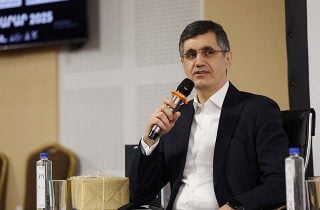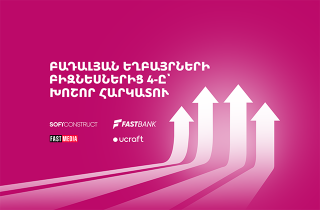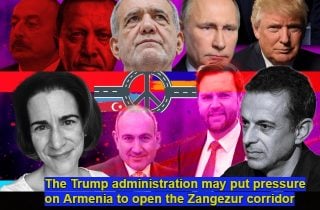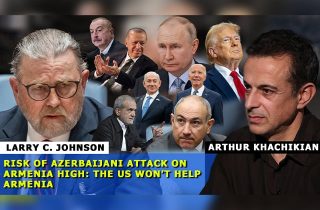
6% Economic Growth: Encouraging or Disappointing Index?

Yesterday official statistics released initial macroeconomic indices for January-April 2016. Judging from them economic condition is not bad, activity has recorded growth, and the growth temp is more intensifying.
Thus, in the period of January-April 2016, as compared to the same period of the previous year, economic activity recorded 6% growth. For comparison it’s worth mentioning that in the period of January-May Economic Activity Index (EAI) was 55%, in January-February—4.7% i.e. the growth temp has accelerated.
Economic activity for March, as compared to April, has grown by 4%.
At the same period, volume of industrial production has grown by 10% (AMD 421 billion), service—by 9.3% (AMD 17 billion), and agriculture—by 4.1% (AMD 11707 billion). A fall has been recorded in the real sector of economy: construction has reduced by 7.4%. Volume of internal trade turnover continues to decrease as well. Throughout the first 4 months of 2016 it comprised AMD 600 billion 178.5 million, which is less by 0.7% from the index of the previous year’s same period. Instead, influential growth is recorded in foreign trade. Export has recorded 21.7% growth, reaching USD 512.6 million. Import volume has grown by 18.4% (USD 1 billion 156.7 million).
Of course, this growth of foreign trade is mainly conditioned by miserable indices for the same period of the previous year (base for comparison was weak). Note, in the period of January-April 2015 export index reduced by 18.8%, and that of import —by 35.7%, i.e. we have returned the losses regarding export, and a part regarding import.
Consuming prices on 12-month basis have fallen by 1.9%. Salaries, just the contrary, have grown by 2.6% (monthly average nominal salary in April comprised AMD 186 698). In short, indices for the first four months aren’t bad.
Moreover, Serzh Sargsyan, RA president, recently stated that entry of taxes and duties with the total amount of AMD 100 billion to the state budget has been recorded, which is a record for Armenia. By that he didn’t intend to say, that administration has been tightened, but rules of the game have changed—level of protectionism has decreased and tax growth has been recorded on account of bringing the oligarchs out of the shadow.
6% economic growth is really a good index for the first 4 months, taking into consideration the fact, that by RA state budget 2.2% economic growth was anticipated. And international structures—the World Bank and International Monetary Fund (IMF), are anticipating 1.9%.
Of course indices for EAI and GDP are different, however, they don’t drastically differ by percentage, and on the basis of one of them opinion may be made of the other. For instance, we concluded 2015 by 3.1% economic activity, and GDP growth (which was concluded later) comprised 3%. Thus, it may be supposed that on the basis of the first four months GDP has recorded about 5-5.5% growth. And if these temps are maintained even higher economic growth will be recorded, than anticipated.
However, this is one of those unique cases when the Government will hardly boast by these indices. Not for the reason that 6% is an unhealthy economic growth. It’s not a secret that growth of industry is mainly conditioned by mining, and growth of service—by intense activity of casinos.
Even if 6% growth was healthy and credible, it’s not enough. And if the 3.6% growth for the same period of 2015 was considered a great achievement, then currently, even 10% economic growth won’t be enough. The April developments showed that we need uneven growth. As we had a period of double digit growth, which not only created prerequisites for further development, just the contrary, it has weakened the economy structure, and made it more vulnerable. Armenia needs 20-25% real growth, influence of which will be felt by all the layers of the society. It’s noteworthy to mention, that potential for that growth is available. Formerly, we have touched upon the fact, that generally, as a result of military conflicts anticipations of economic growth are reviewed towards the decline, however, in our case just the contrary may be recorded. To the sense, that the April war makes implementing real, serious changes by providing economic development from which our security depends. It’s another question whether there is any desire to use that potential or not.
Speech by the head of the Government a week ago was considered revolutionary for many. Others agree that the speech was revolutionary, however, is a question whether the forthcoming steps will be revolutionary or no. Note, the Prime Minister, basically declared a war against ineffective state expenditures, corruption, monopolies, hidden interests of officials and other phenomena hindering economic growth. On account of both the factor of high-ranking officials and former statements and those very internal personal and group interests, many didn’t believe and don’t believe that sincerity. Accordingly, they don’t believe that the authorities are ready to show political will and set economy to rights. However, this time the situation radically differs from the previous situations.
Two days ago a resolution was adopted to shorten 800 service cars, which is a serious expenditure for the taxpayers. However, real economic growth is much more important than the saving mode. And for real growth complex solutions are necessary, not only economic, but on all the levels (legal, political and etc).
Thus, it’s not important at all that we currently have 6% economic activity or higher/lower by one percentage point. It’s even more important what we are doing today.
By Babken Tunyan























